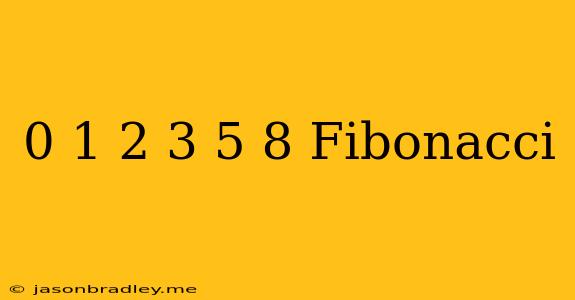The Curious Case of the 0, 1, 2, 3, 5, 8 Fibonacci Sequence
The Fibonacci sequence is a fascinating mathematical concept that has intrigued mathematicians and scientists for centuries. The sequence is defined by the following rule:
Each number is the sum of the two preceding numbers.
The most commonly known sequence starts with 1, 1, but it can be extended backwards, resulting in 0, 1, 1, 2, 3, 5, 8, 13, 21...
While the sequence is simple to understand, it appears in many unexpected places in nature and mathematics. Here are some interesting facts about the Fibonacci sequence:
The Golden Ratio
The Fibonacci sequence is closely linked to the Golden Ratio, denoted by the Greek letter Phi (φ). The Golden Ratio is approximately 1.618.
As the sequence progresses, the ratio of two consecutive Fibonacci numbers gets closer and closer to the Golden Ratio. For example:
- 8/5 = 1.6
- 13/8 = 1.625
- 21/13 = 1.615
The Golden Ratio is also found in many natural phenomena, such as the spiral arrangement of leaves on a stem, the pattern of petals on a flower, and even the proportions of the human body.
The Fibonacci Spiral
The Fibonacci sequence can be visually represented by a Fibonacci spiral, which is a spiral that is created by drawing squares with sides equal to the Fibonacci numbers and then connecting their corners with smooth curves.
This spiral, like the Golden Ratio, is often observed in nature, such as in the shell of a nautilus and the arrangement of seeds in a sunflower.
Applications in Science, Nature, and Art
The Fibonacci sequence is not just a mathematical curiosity. It has applications in a wide range of fields, including:
- Computer science: Used in algorithms for data compression, searching, and sorting.
- Biology: Found in the branching patterns of trees, the arrangement of leaves on a stem, and the spiral patterns of seashells.
- Art and architecture: Used in the design of buildings, paintings, and sculptures.
The Sequence's Origins
The sequence is named after Leonardo Pisano, an Italian mathematician who is better known as Fibonacci. He introduced the sequence to the Western world in his 1202 book "Liber Abaci".
While Fibonacci is credited with popularizing the sequence, it is likely that it was known by Indian mathematicians centuries earlier.
Further Exploration
The Fibonacci sequence is a rich and fascinating topic. If you are interested in learning more about this sequence, you can explore the following topics:
- The Golden Ratio and its relationship to the Fibonacci sequence.
- The applications of the Fibonacci sequence in different fields.
- The history of the Fibonacci sequence and its discovery.
The Fibonacci sequence is a powerful tool that can be used to understand and model the world around us. It is a testament to the beauty and interconnectedness of mathematics and nature.
